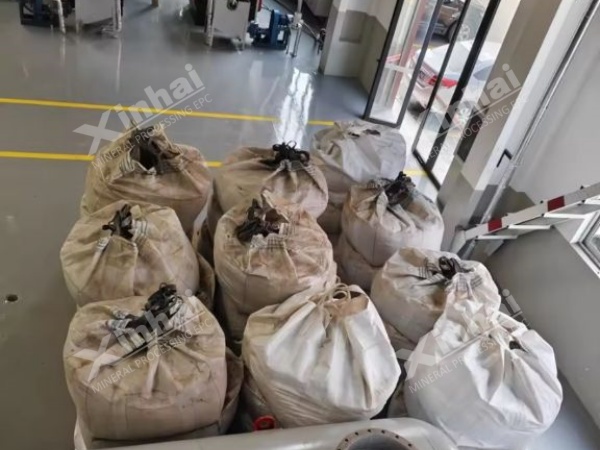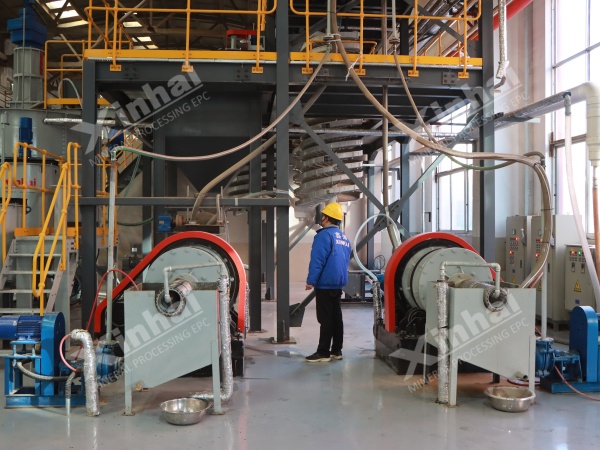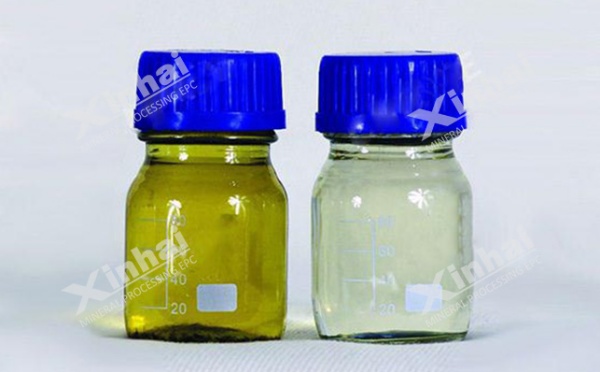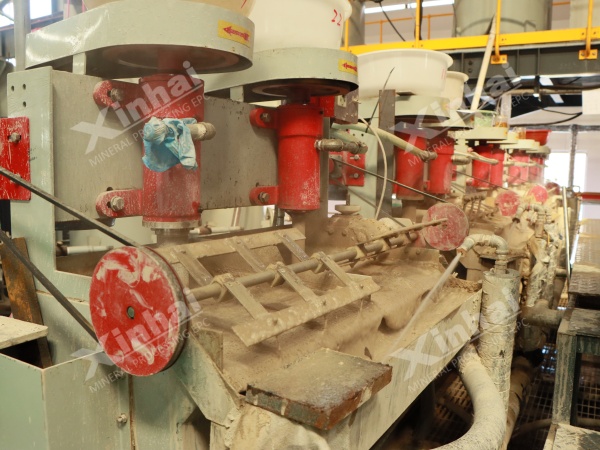If you want to know more information (such as product/process price, etc.), please contact us 24-hour telephone
Laboratory testing is the first step in mineral processing, while pilot testing represents the final stage before industrialization. Also known as a semi-industrial or scale-up test, the pilot test serves to verify and optimize laboratory-scale processes and identify potential issues.
When equipment is scaled up several times, when the process enters continuous operation, or when ore properties begin to fluctuate — can you still guarantee the same results as those obtained in the lab? This is where the importance of pilot testing becomes evident.
This article introduces the phosphate ore pilot test conducted by the Xinhai Mining Research Institute, highlighting the critical role of pilot testing in bridging laboratory work and industrial production.
Commissioned by a fertilizer company, Xinhai Mining Research Institute undertook a continuous test research project on mineral processing scale-up of phosphate rock samples.
Samples were taken from the mine by the client and sent to Xinhai Mining Research Institute in Yantai City, Shandong Province, totaling 33 tons.

The main ore mineral is collophanite, with gangue minerals mainly consisting of carbonate minerals, quartz (including silicified quartz), mica, etc. The content of metal minerals is relatively low, with the primary metal minerals being iron oxides such as hematite and minor amounts of pyrite.
The main valuable element in the ore is phosphorus, with a P2O5 grade of 24.83%. The grades of SiO2, MgO, and CaO are 11.85%, 4.56%, and 42.51%, respectively. The main harmful impurities are SiO2 and MgO.
Ore crushing → grinding (fineness: 90% passing 200 mesh) → two coarse, two sweeping, and two fine flotation stages → coarse concentrate acid slurry adjustment → three-stage reverse flotation → phosphate concentrate.
Crushing: The sample is crushed by the supersonic vortex mill independently developed by Xinhai. The crushed particle size is approximately -5 mm.
Grinding: The crushed product enters the grinding system and is ground by a rod mill, achieving a fineness of 90% passing 200 mesh.

Flotation:
Direct flotation: This test is conducted with reference to the laboratory process test results. To ensure flotation efficiency, the direct flotation operation is scaled up from one coarse, one sweeping, and one fine flotation stage in the small-scale test to two coarse, two sweeping, and two fine flotation stages.
Reverse flotation: After acidification of the coarse concentrate obtained from direct flotation, a three-stage reverse flotation operation is performed to obtain the phosphate concentrate. (The reverse flotation process follows the pilot test procedure without adjustment.)
Scale of continuous test: feed rate of 120 kg/h (equivalent to 2.88 tons of raw ore per day).
Operation time: 72 hours of continuous and stable operation.
Temperature control: In the winter environment of Yantai, the slurry temperature is maintained at 28±1℃ to address the low-temperature flotation issue.
The continuous mineral processing test verified the breakthrough technical indicators as follows:
Phosphate concentrate yield: 62.10%
P2O5 grade: 30.50%
Recovery rate: 76.30%
The phosphate concentrate’s SiO2 grade is 4.03%, and MgO grade is 1.56%.

During the beneficiation test conducted in winter, insufficient temperature had a significant impact on the performance indicators. The temperature issue was resolved by adding a heating device.
The phosphate rock pilot project requires strict control of grinding fineness, with a target of 90% passing 200 mesh and a strict limit to avoid over-grinding.
Xinhai Research Institute continuously adjusted and optimized the grinding parameters, strictly controlled grinding conditions, and used forged steel as the grinding medium to ultimately achieve the target fineness.
Due to the extremely fine particle size after grinding, the concentration of the grinding classification product was low, preventing it from entering the separation stage directly.
Xinhai Research Institute first concentrated the qualified products after grinding classification using a concentrator, then sent the concentrate to the agitation tank for reagent dosing once it met the required standard.

Xinhai developed a specialized reagent formula for this project. The formulation was based on the professional expertise of Xinhai technicians and extensive operator efforts. Through repeated experiments and trials, a reasonable reagent formula was finalized, earning high satisfaction from the customer.
The pilot test validated the feasibility and stability of the laboratory process under real production conditions. Essentially, the pilot test serves as a scale-up verification of the lab process, providing more accurate and reliable data.
The phosphate mine pilot test project received high recognition from the customer. The customer feedback stated: “The stability data from 72 hours of continuous operation directly supported the preparation of our ore dressing plant feasibility study report. The professionalism of Xinhai Research Institute far exceeded our expectations!”

Xinhai is an enterprise with strong R&D capabilities. The supersonic vortex mill used in the crushing stage of the phosphate project is an independently developed product by Xinhai. In addition, Xinhai has increased its R&D efforts this year on flotation machines, ball mills, and other equipment, striving for greater breakthroughs.
Xinhai employs dozens of experienced mineral processing experts and researchers who apply their professional knowledge and project experience to support every pilot test.
For example, in the phosphate project, researchers continuously tried and adjusted grinding parameters from a professional perspective. Based on years of experience, they determined that the flotation effect observed in the small-scale test could not be achieved at larger scale, and thus adjusted the direct flotation process during the pilot test, finally achieving project indicators that satisfied the customer.

Unlike other third-party institutions, Xinhai Research Institute is affiliated with Xinhai Mining Technology Equipment Co., Ltd. (hereafter “Xinhai Mining”). Founded in 1997, Xinhai Mining has completed projects in more than 100 countries and regions worldwide and has provided mining services to over 2,000 mines.
Since a pilot test is essentially a scaled-down version of the concentrator, project construction and concentrator operation experience play pivotal roles in pilot testing.
Conclusion
The above introduces phosphate ore pilot test projects undertaken by Xinhai. Currently, Xinhai Research Institute is conducting pilot projects for gold mines, copper mines, cesium garnet, and others. If you are uncertain about the pilot test process, it is recommended to contact Xinhai for further pilot testing (scale-up tests) to obtain more accurate test data to support your concentrator construction.